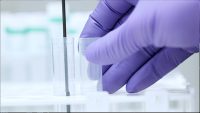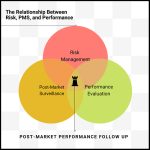Class III medical devices are getting a lot of airtime in the discussion about the EU Medical Device Regulation (MDR) preparation, but we can’t forget about reusable devices. Under MDR, there’s a new subclass for Class I reusable devices (Class Ir), such as surgical instruments and endoscopes, putting such devices under a higher level of scrutiny and introducing new regulatory oversight. Extensions won’t be granted for Class Ir, and grandfathering in legacy devices will be strictly prohibited. As of May 26, 2020, every Class Ir device must have an MDR CE mark to be permitted in the market.
While the standards of the current Medical Device Directive (MDD) place emphasis on validation goals, and International Standards outline how to build a study design, each member state has developed a different set of interpretations and expectations, because validation standards have not been enforced uniformly. In general, it was assumed that device manufacturers were responsible for interpretation, execution and self-determination as to what a validation entailed to meet MDD compliance.
Under MDR, it is not permissible for OEMs to self-designate devices that fall into the Class Ir category. In order to obtain a new CE mark for a Class Ir device, a detailed technical file that proves safety and efficacy of the cleaning, disinfection and sterilization processes outlined in the device’s instructions for use (IFUs) must be submitted. Without a standard definition of “clean”, the responsibility falls to device manufacturers to ensure cleaning, disinfection and sterilization instructions are adequate and comprehensive. Regulators expect manufacturers to validate their instructions to demonstrate a reliable and repeatable process even under worst-case scenarios.
Technical File Review
First, take a look at the technical files for each of your Class Ir devices. Legacy devices that have been on the market for a long time will be more laborious, so start with these. Keep in mind, notified bodies will not rely on historic product performance or reviews to meet MDR requirements—you need data.
Within the gap analysis, evaluate historical data and identify missing or outdated pieces in device design history files. You will need to confirm that validations exist in the design file that support their IFU claims. Keep in mind that if a product family consists of multiple catalog numbers and SKUs, validation evidence must be documented to cover all of those devices. If gaps are identified, engage a contract research organization (CRO) to recommend appropriate validation tests that can rectify gaps and provide supplemental data. Working with a laboratory testing partner will help develop experimental design and validation methods that are compliant with the latest guidance and regulatory documents.
Validation Studies
To prove the robustness of a process design and to validate that normal process variables do not impact a product’s acceptance criteria, a cleaning validation should be executed. A validation package should prove that the manual or mechanical cleaning methods allow the device to be reprocessed effectively, and for devices cleaned in healthcare settings, that they clearly convey proper instructions for the user.
The goal is to generate objective evidence and documentation that the processing methods consistently produce predetermined results. Robustness, repeatability and reproducibility are key validation principles to employ:
- Robustness: A study needs to test worst-case conditions.
- Repeatability: Sample sizes need to be statistically sound, and outputs and data consistency should be confirmed.
- Reproducibility: Multiple efficacy cycles should be performed to account for variations in the test system, which further supplements data integrity.
There are various types of validation services that can be used to prove the safety and efficacy of cleaning, disinfection and sterilization processes.
- Protocol development: A custom protocol should be written for each study, tailored specifically to the device and instructions for reuse.
- Cleaning efficacy studies: Manufacturers must validate the efficacy of recommended cleaning processes. Following the manufacturer’s cleaning instructions, cleaning efficacy studies test those processes with simulated use, artificial soils and worst-case parameters to confirm test marker acceptance criteria.
- Sterilization efficacy studies: Manufacturers must provide healthcare facilities with detailed sterilization instructions for their particular medical device. Sterilization parameters are tested to determine capability of producing a sterility assurance level (SAL) of at least 10-6.
- Dry time validations: Manufacturers must provide healthcare facilities with an effective dry time to be used in conjunction with the required steam sterilization cycle. Drying cycles are tested to prove the cycle works according to the given parameters.
- Support for functionality studies: These studies involve exposure to multiple cleaning, disinfection and/or sterilization cycles as a prelude to the functionality studies required to determine the useful life of a device.
- Disinfection efficacy studies: Disinfection studies determine the effectiveness of a process by evaluating the ability of the selected disinfectants to reduce microorganisms to acceptable levels on the medical device.
Five Rules of Testing to Keep in Mind
- At a minimum, proper test controls and two relevant markers are required. Controls include the positive and negative device control, as well as the positive and negative sample control. Common endpoint markers include protein, hemoglobin, carbohydrate and total organic carbon (TOC). The test markers identified should be present in the applicable artificial soil chosen.
- Simulated use cycles need to reflect the life of the product or run a minimum of six cycles. The complexity of the product design, lifecycle, and product risk profile are all inputs into cycle determination. Additionally, simulated use should take into account all the processes in a reuse cycle. This includes cleaning but may also include disinfection or sterilization based on the product IFU.
-

Evaluating cleaner and detergent residuals is critical. Image courtesy of WuXi AppTec. Recovery efficiency should be performed for all studies. Extraction methods have their limitations on the ability to displace residual soil into solution. As a result, the recovery efficiency validation documents the effectiveness of the extraction process and generates a correction factor that is used in the calculation when determining total marker endpoints.
- Removal of cleaner and detergent residuals must be tested and evaluated.
- Cleaning efficacy and disinfection efficacy studies are performed independently. A cleaning validation and its construct is separate from a disinfection validation. As such, independent protocols and reports for each must be generated to document the effectiveness of each reprocessing step.
Cost of Re-Use Validation Failure
Improperly conducting a study is costly from a time and monetary standpoint. Failing to provide adequate validation may result in slowed time to market, increased total cost of preclinical testing and marketshare loss—to name a few consequences. Watch out for the following common reasons studies fail:
- Not selecting worst-case test soil
- Not using worst-case device and parameters
- Not including proper test controls
- Not using relevant markers
- Not including accumulation cycles
- Recovery efficiency not performed or too low
- Performing cleaning and disinfection together as one validation
- Not demonstrating and documenting appropriate test soil drying times
Team Up with a CRO
How you go about selecting a testing partner is just as important as the testing itself. Ask questions before you sign contracts. You want to choose a CRO that is knowledgeable on the ever-changing technical and regulatory landscape. Study designs need to incorporate industry best practices, lessons learned, process validation principles and current regulatory guidelines. While general scientific principles are important, you also want to work with a partner that keeps your organization’s best interest in mind. There is no one-size-fits-all approach to testing, so make sure a CRO considers your unique device and its IFU, the function of the device’s design, the cleaning complexity, device materials and criticality.
Finally, keep in mind that notified bodies must go through a new designation and notification process before they will be eligible review your device’s technical file and approve a CE mark. With the number of notified bodies shrinking, ones that you’ve used in the past may not make the cut or may not have capacity. Also, note that increased specialization of notified bodies is expected. With these factors in mind, it is a wise move to get in touch with your notified body—and CRO—as soon as possible, as the industry anticipates capacity constraints. Contingency plans and proactive communication and scheduling will be important.
May 26, 2020 will be here before you know it. Thoughtful planning, partnership and attention to detail will be your keys to success in getting your Class Ir devices in compliance with MDR. The tips provided here will help get you started down the right path.







